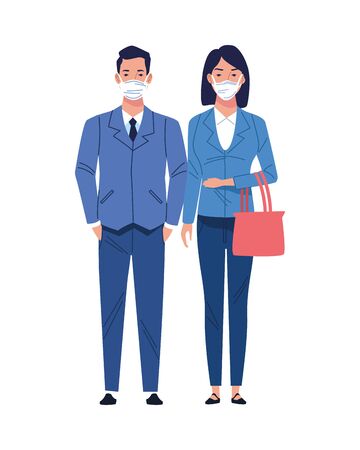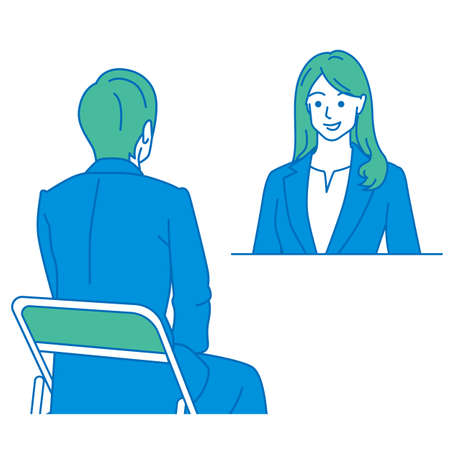Dress for the Role You Want
Even though your job interview might be taking place over Zoom or Google Meet, your wardrobe choices still make a strong first impression. Dressing for the role you want isn’t just about looking sharp; it’s about showing respect for the company and position you’re aiming for. Take some time to research the organization’s culture—check their website, social media, or even employee LinkedIn profiles to get a feel for how formal or casual their dress code is. If you’re interviewing with a creative tech startup, smart casual attire like a crisp shirt or blouse may be appropriate. For more traditional industries like finance or law, stick with business professional looks such as a blazer and tailored shirt. Remember, it’s always better to be slightly overdressed than underdressed in an interview setting, virtual or not. This attention to detail signals that you are serious about the opportunity and ready to represent yourself—and your potential employer—in the best possible light.
2. Colors and Patterns That Work on Camera
Choosing the right colors, patterns, and fabrics for your virtual job interview is more important than you might think. The camera can play tricks on certain shades or designs, either washing you out or creating distractions that steal focus from what you’re saying. Below are practical tips to help you select attire that looks polished, professional, and flattering over video calls.
Best Colors for Virtual Interviews
When it comes to color, solid and muted tones generally work best on camera. Avoid neon shades and overly bright colors, which can create glare or make your skin tone look unnatural. Here’s a quick guide:
| Color Type | Why It Works (or Doesn’t) | Examples |
|---|---|---|
| Solid Neutrals | Timeless, professional, and universally flattering; do not distract from your face. | Navy, charcoal gray, white, beige, soft blue |
| Pale Pastels | Add subtle color without overwhelming the frame; gentle on most skin tones. | Pale pink, light lavender, soft mint |
| Bold Colors | Can be energizing but should be used sparingly; avoid if they dominate the screen. | Burgundy, forest green (in moderation) |
| Brights & Neon | Tend to reflect poorly on camera; may clash with lighting or background. | Avoid: bright red, hot pink, neon yellow |
| Pure Black/White | Can cause lighting issues and harsh contrasts; use off-white or dark navy instead. | Avoid all-black or all-white tops |
Patterns: Less Is More
Busy patterns like tiny stripes, checks, or intricate prints can create a distracting effect known as moiré on camera, making them appear to move or shimmer. Stick with simple patterns or solid colors to keep the focus on you. If you want to add visual interest, opt for broad stripes or subtle textures that add depth without overwhelming.
Pattern Do’s and Don’ts:
- Do: Choose solids or very subtle patterns such as a faint pinstripe or a small polka dot.
- Don’t: Wear bold geometric shapes, tight plaids, or any print that could “buzz” on screen.
- Do: Use texture (like a knit sweater or tweed blazer) for dimension instead of loud prints.
- Don’t: Mix multiple patterns in one outfit.
The Right Fabrics for Video Calls
Certain fabrics catch the light differently and may wrinkle easily after sitting down. Opt for matte fabrics over shiny materials to avoid glare. Materials with a slight stretch often maintain their shape better during long interviews. Avoid silk blends or anything that wrinkles quickly unless you can ensure a crisp appearance throughout your meeting.
Avoid These Common Pitfalls:
- No wrinkled clothing: Even minor wrinkles are more noticeable on camera.
- No excessive accessories: Large jewelry pieces can reflect light and distract from your message.
- No see-through fabrics: Always check how your top looks under your room’s lighting before logging in.
- No logos or slogans: Keep your outfit free of brand names and busy graphics for a clean professional look.
Selecting your interview attire with these tips in mind ensures you present yourself as confident and detail-oriented—qualities every employer values in the American workplace culture. Remember: when in doubt, keep it simple and let your skills shine through!

3. Grooming and Personal Presentation
When it comes to virtual job interviews, your grooming and personal presentation play a crucial role in making a strong first impression—even through the screen. Aim for a neat and tidy hairstyle that keeps hair away from your face, ensuring you look alert and engaged on camera. For makeup, consider a natural, understated approach: focus on even skin tone, subtle eye definition, and a bit of lip color to brighten your appearance without distracting from your words. Facial hair should be well-groomed; trimmed beards or clean-shaven looks are both professional as long as they’re maintained. Pay attention to details like clean nails and minimal, non-distracting accessories. Remember, the goal is to appear polished and approachable, projecting subtle professionalism that supports your confidence without overshadowing your skills and personality.
4. Setting the Scene: Your Virtual Background
First impressions matter—even in a virtual interview. While your wardrobe and grooming speak volumes, your environment can amplify (or undermine) your professional image. The right virtual background ensures your interviewer focuses on you, not what’s happening behind you.
Best Practices for a Professional Virtual Background
- Keep it Clean and Simple: Choose a tidy, clutter-free background. A plain wall, bookshelf, or neatly arranged workspace works best.
- Avoid Distractions: Remove personal items, busy artwork, or anything that could draw attention away from you.
- Mind the Movement: Keep pets and family members out of the frame to prevent interruptions.
- Use Virtual Backgrounds with Caution: If you opt for a digital background, choose neutral, office-like images—nothing flashy or cartoonish.
Lighting and Camera Angle Recommendations
| Element | Best Practice |
|---|---|
| Lighting | Sit facing a window for natural light or use a soft lamp placed in front of you. Avoid overhead lights or backlighting, which can create harsh shadows or make you appear as a silhouette. |
| Camera Angle | Position your camera at eye level so you’re looking directly ahead. Stack books or use a laptop stand if needed to raise your device. Frame yourself from mid-chest up for a balanced view. |
| Sound Environment | Select a quiet space and mute notifications to minimize disruptions during the interview. |
Quick Tips for Nailing Your Setup
- Do a test call to check how your background looks on screen.
- Avoid sitting with windows or bright lights directly behind you.
- If sharing space with others, let them know about your interview time to minimize interruptions.
- Keep water nearby but out of camera view to stay refreshed without cluttering the scene.
Your virtual presence is an extension of your professionalism. A polished background shows attention to detail and respect for the interview process—traits that American employers truly value.
5. Accessories and Details Matter
When preparing for a virtual job interview, the right accessories can subtly communicate your attention to detail and professionalism—without overshadowing your overall appearance. The key is to keep it simple and intentional.
Jewelry: Less Is More
Choose minimalistic jewelry pieces that complement your outfit but do not draw too much attention. For example, stud earrings or a single small pendant necklace can add polish without distraction. Avoid large, flashy pieces or anything that might catch light and create glare on camera.
Watches: Functional and Stylish
A classic wristwatch can enhance your professional look, signaling punctuality and organization. Opt for styles that are understated and clean rather than sporty or oversized. During a virtual interview, avoid constantly checking your watch, as this may come across as disinterest.
Ties: When in Doubt, Go Conservative
If you choose to wear a tie, stick with solid colors or subtle patterns. Loud prints can be distracting on camera. Make sure the tie is neatly tied and sits properly within the frame of your video—avoid novelty designs unless you’re interviewing in a highly creative industry where such expressions are encouraged.
Other Accessories: Final Touches
Belts, hair accessories, and glasses should all be neat and in good condition. If you wear glasses, check for glare from your screen or lighting. Hair clips or bands should match your outfit’s tone and not draw unnecessary attention.
Keep It Authentic
Your goal is to look put-together while still feeling like yourself. Accessories should enhance your confidence and professionalism—not distract from your skills and experience. Before logging into your interview, double-check your look on camera to ensure every detail supports the image you want to project.
6. Comfort Meets Confidence
When preparing for a virtual job interview, its easy to focus solely on looking sharp on camera, but dont underestimate the power of comfort. Striking the right balance between professionalism and physical ease can have a direct impact on your confidence and performance during the conversation. Choose fabrics that breathe well, allow freedom of movement, and aren’t prone to wrinkling—think soft cotton blends or lightweight knits in neutral tones. Avoid stiff collars or overly tight sleeves that could distract you or make you fidgety mid-interview.
Remember, while your interviewer may only see you from the waist up, dressing professionally from head to toe helps you mentally shift into “interview mode.” However, this doesnt mean sacrificing comfort. Opt for a tailored blouse or shirt paired with comfortable slacks or skirts with elastic waistbands. Footwear is less important on camera, but wearing shoes rather than slippers can help reinforce your professional mindset.
If you wear accessories, keep them simple and unobtrusive—nothing that clinks, shines excessively, or demands attention away from your words. The goal is to ensure your outfit supports your confidence without becoming a distraction. When you feel good in what youre wearing, it shows; youll sit taller, speak more clearly, and be able to give your full attention to the conversation instead of adjusting uncomfortable clothing.
Ultimately, balancing professionalism with comfort is about creating an environment where you can be your best self. Pick outfits ahead of time and do a quick camera check to ensure everything looks polished yet feels natural. This way, you’ll project both competence and authenticity—two qualities every employer is looking for in a remote work setting.


